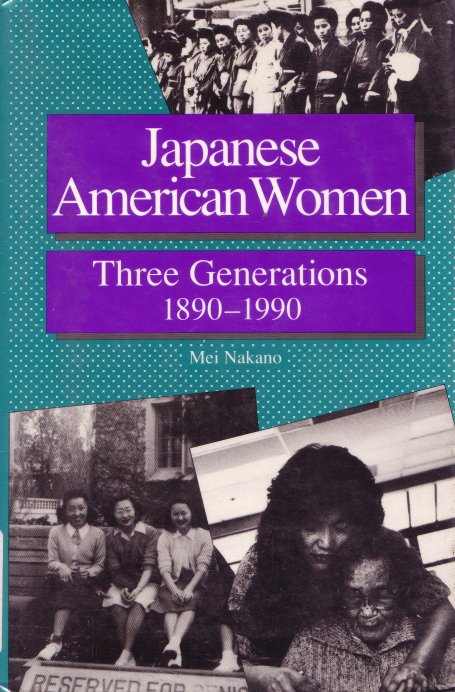
Japanese American Women: Three Generations, 1990

This book examines Japanese American women and their lives, covering three generations of settlers. The Issei, the first generation, the Nisei, the second, and the Sansei, the third generation. The Issei are the ones who immigrated from Japan and were not allowed to be American citizens. Their children, the Nisei, were born in the country and were automatically American citizens but, together with the Issei, were gathered up and put into internment camps during World War II if they lived on the West Coast.
The book is quite good. Among the most interesting aspects were:
References to what happened just after the attack on Pearl Harbor, when persons of Japanese ancestry knew that the FBI was starting to gather up Japanese Americans. As a result, many burned family mementos and other items.
”Similarly, nearly every family burned or buried articles, some absurdly immaterial to the questions of loyalty. Personal letters and photographs from their families in Japan were heaped onto the pyre, as were valuables such as diaries, kimonos, religious paraphernalia and art objects.”
One of the things the author points out that I have not seen referred to in other books is the fact that many of the Issei women who were put into the internment camps were experience menopause, and this contributed to their depression. In addition, many of the husbands, who were generally ten years older than the wives, were beginning to have physical ailments from old age and they needed care, the kind of care they could not properly receive in internment camps.
As with other sources, the book talks about what happened when Issei and Nisei tried to return to homes on the West Coast after being released from the internment camps:
”The vanguard of returnees were met with both organized and unorganized hostility. 'No Japs' signs flaunted their clear message here and there. Homes were shot into, and a number of arson cases occurred. In Los Angeles, the Nichiren (Buddhist) Temple, where 600 families had stored their worldly goods, had been ransacked. Many returnees found their nursery greenhouses and farms and homes in ruins.”
The author addresses the situation at the Tule Lake camp in particular since this was the camp where the “no-no's” and dissidents were sent. Women had been trying to hold the families together, but it became incredibly hard in the camp since so many men were being arrested for refusing the draft or for being “agitators.” In November of 1943 1,200 Army soldiers, using eight tanks and tear gas, too over the camp after a riot.
Something which I didn't know was that some 700 Japanese Americans survived the atomic bombs that were used on Japan. They were among the Japanese Americans who were visiting Japan, for one reason or another, before the war and were trapped there during the war. “Tokyo Rose” is also discussed since she was also one of those Japanese Americans who was trapped there.
Main Index
Japan main page
Japanese-American Internment Camps index page
Japan and World War II index page
|